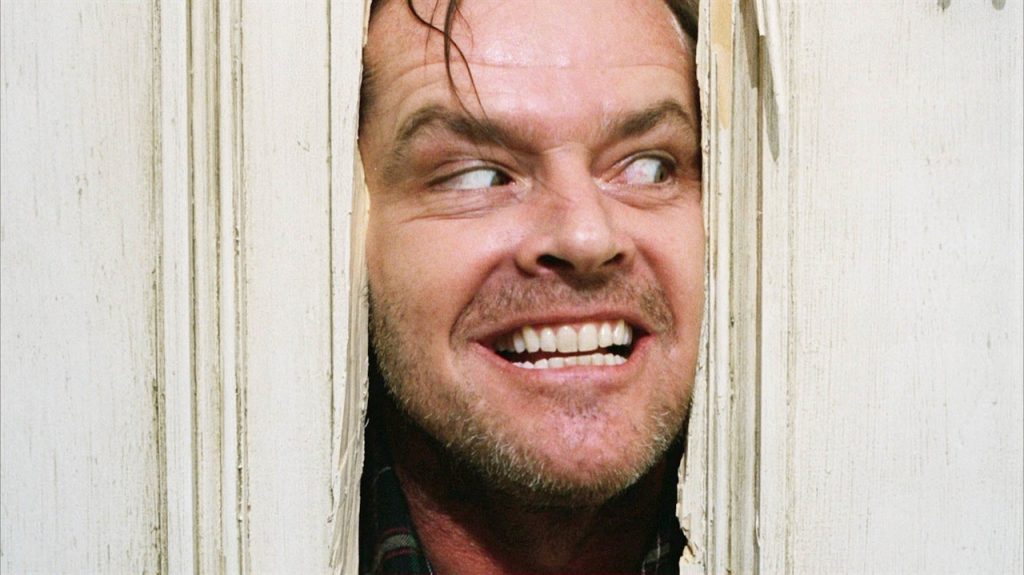“HERE’S JOHNNY!”: ‘THE SHINING’ RETROSPECTIVE
Stanley Kubrick’s “The Shining” revolutionized the art of horror films.
The premise for the film’s structure seems generic at surface level, but it stands out due to its unique approach to said genre. For example, there’s almost never a jump scare or a cheesy horror trope throughout the whole thing.
Instead, the film drives the stylistic pattern of Kubrick not using quick cuts and cheap jump scares. He views the horror in a similar artistic lens he that views outer space in “2001: A Space Odyssey,” by capturing an aesthetic and a mood that sets the stage for what’s about to be experienced.

That’s what separates The Shining from other horror films. Kubrick’s direction invokes a feeling and an experience, not a story tacked on to ride the back of “cheap entertainment.”
Kubrick was known as perfectionist who had an eye for the framing a scene and the lighting of a set, something that he heavily applied in works such as “A Clockwork Orange,” “Barry Lyndon” and 2001. By the time he got around to The Shining, he was already a master at his craft and it shows in several scenes. Shots like the ones where he frames the mountain lodge hallways and the big room where Jack types out his book were all shot with Kubrick’s own hands, a talent other directors and cinematographers don’t have. This gives the movie an edge on other horror movies from that time, because it’s an aesthetically pleasing film to look at and the shots are just about as beautiful as scenes from 2001.
Jack Nicholson as Jack Torrance is considered one of the greatest acting performances, in retrospect, for a reason. Nicholson was already an insane-looking guy, and although that was a criticism, it really makes the scenes near the end of the movie truly scene stealing, and a testament to his performance. This directly feeds into the what makes the movie so scary – the feeling of insanity and isolation. The film elaborates on the creepy feeling by never showing the monster, and then pulling the veil away and having the audience look at the monster in a different light, much like other horror movies do. But rather, in this one we’re introduced to Torrance as simply a man with certain past (in that opening scene, lots of foreshadowing is done). The ‘monster’ is more than one thing – the hotel, the previous caretakers – and Jack is the last creation to emerge out of that.
Horror movies tend to use the trope of some big bad monster or killer stalking around the victims of the movie in order to create suspense for when things build up later on, but again, this movie takes a different approach.
The victims in this movie are the wife and child of the killer and it isn’t until one cold night in the hotel, months after they’ve unpacked their bags, where the gloves come off and the screws come loose. I notice that horror movies typically structure the plot in a one-day scenario so it doesn’t drag out any other elements that make up their plot, but The Shining builds its atmosphere and suspense a long time before the actual events go down.
To accompany all these elements is the music, which was so fitting and innovate at the time that it really completes the experience. The sound often amounts to loud, brazen noises that drive you to the feeling of eeriness, like a car to a destination. One can say that the music cues the audience on what’s scary and what isn’t, but the acting and on-screen performances say otherwise. Instead, the score really hits deep into a certain place that makes us feel disgusted, physically. The first time watching the scene where Jack enters the infamous Room 237 made me sick to my stomach because everything the movie was striving for hit me, deep, in that it’s both hard to watch and hard to look away from.
It’s quite tremendous that all these pieces put together made up a movie that’s been not only impactful for the horror genre, but filmmaking in general.
The miracles of this film are both accidental, like the acting and the music choices, and finely tuned like the overall aesthetic and the way the movie differs from the original Stephen King “The Shining” book. All of it comes down to a single causation – Kubrick – who at the time was controversial but in hindsight, for all the right reasons. He wanted to push the medium of film as more than consumable, instead as everlasting.
“Doctor Sleep” releases in theatres on Nov. 7.
5/5

Leave a comment